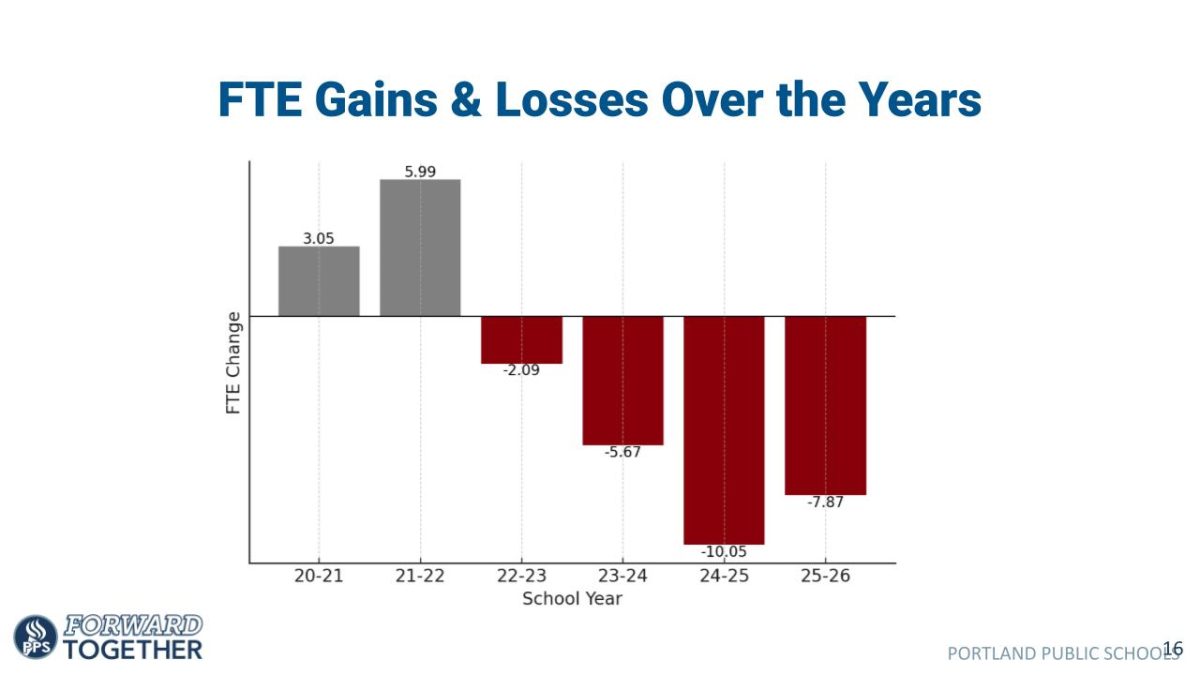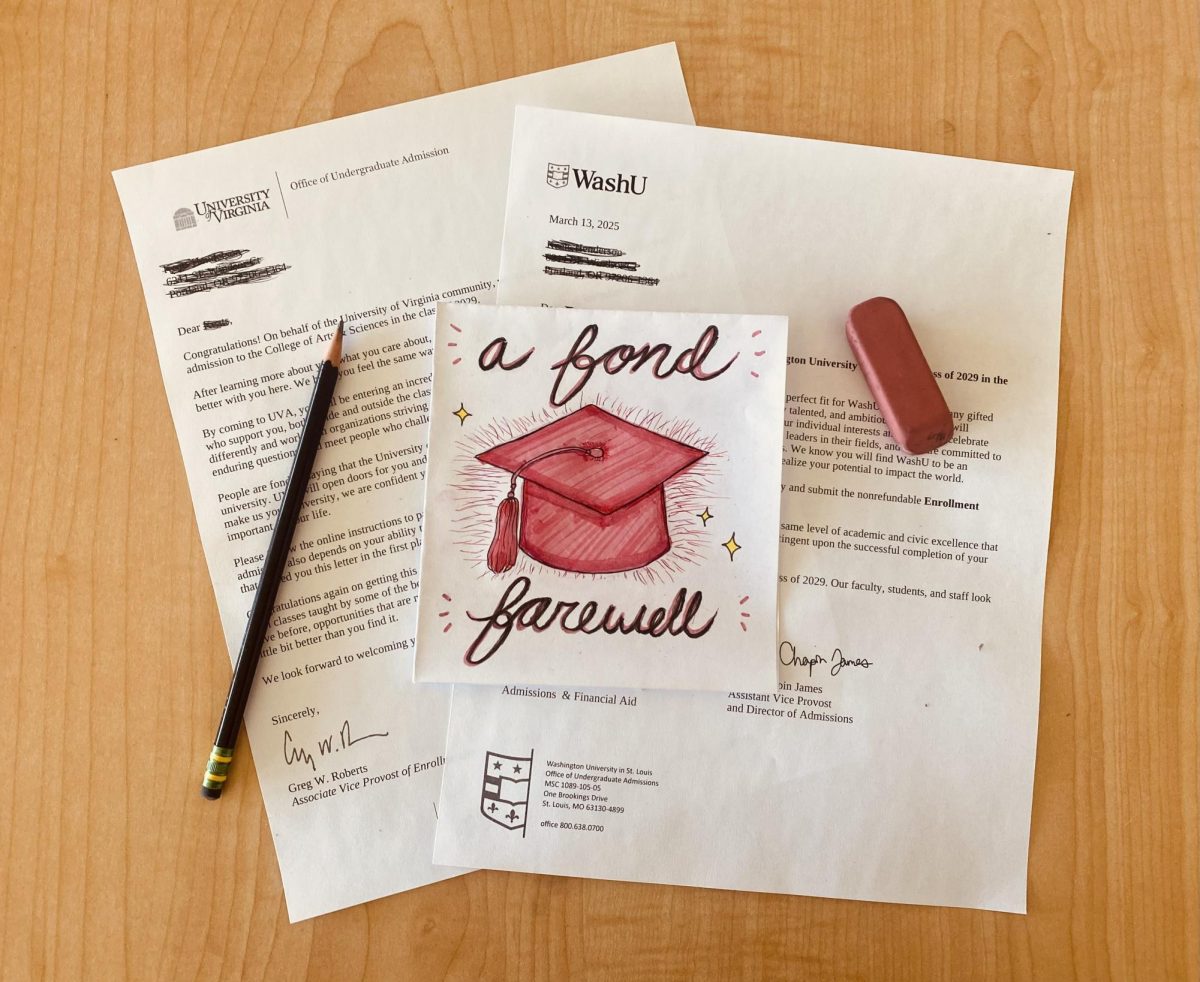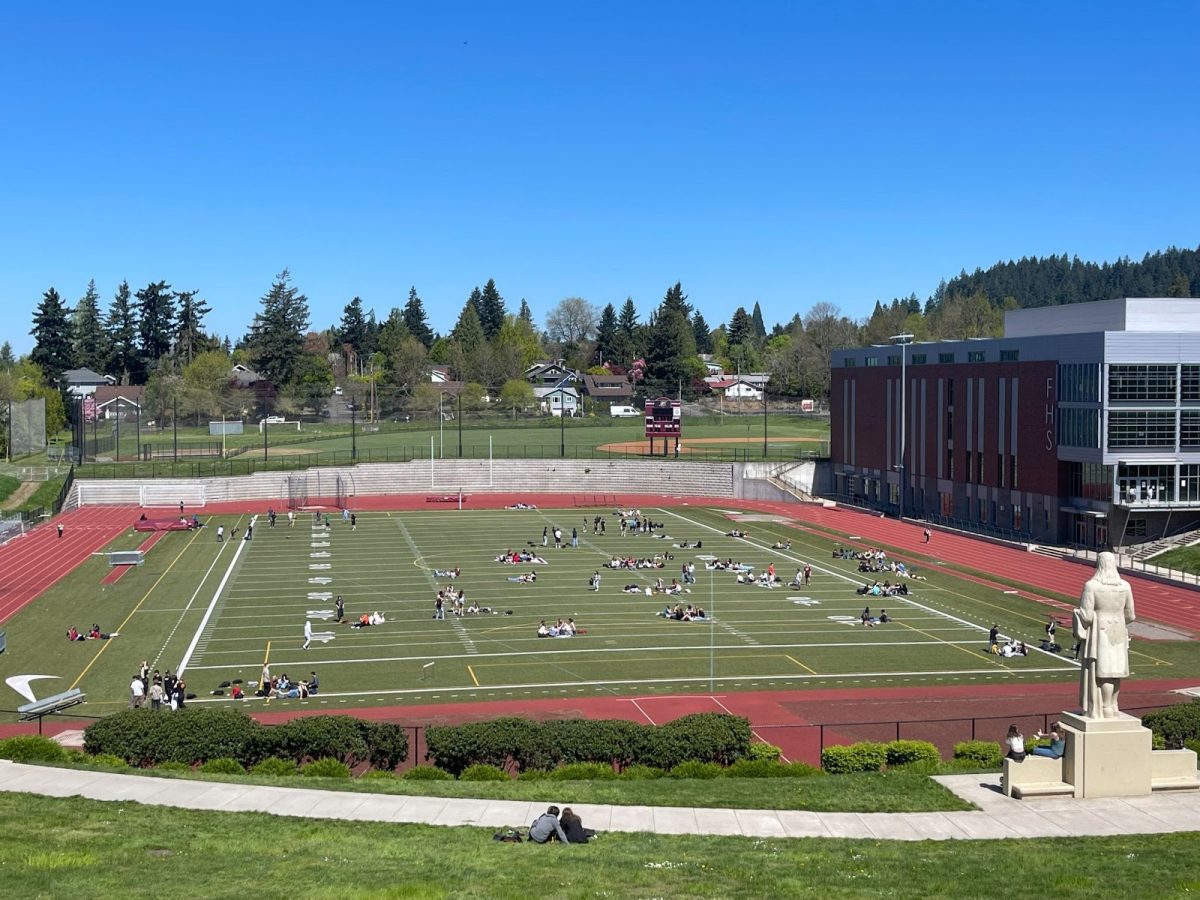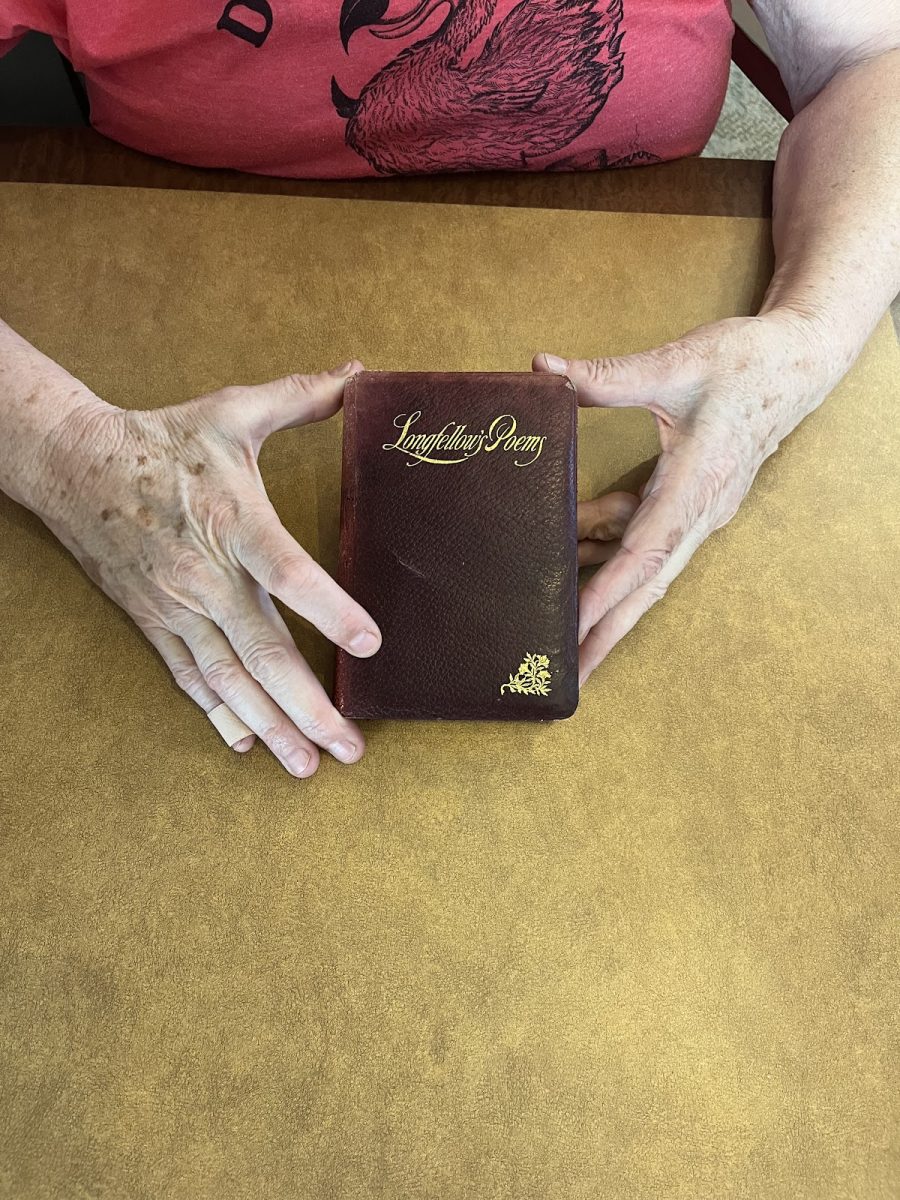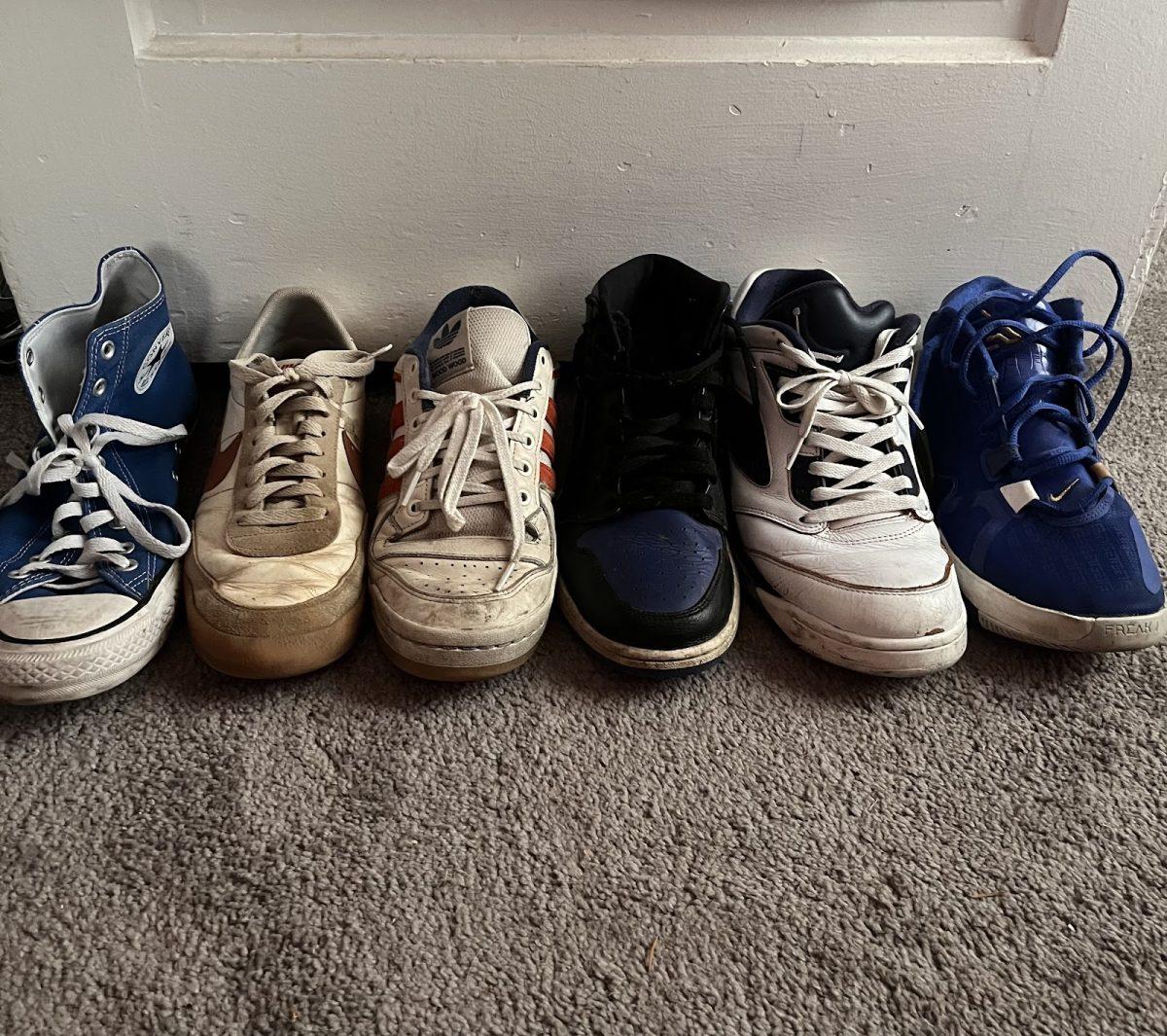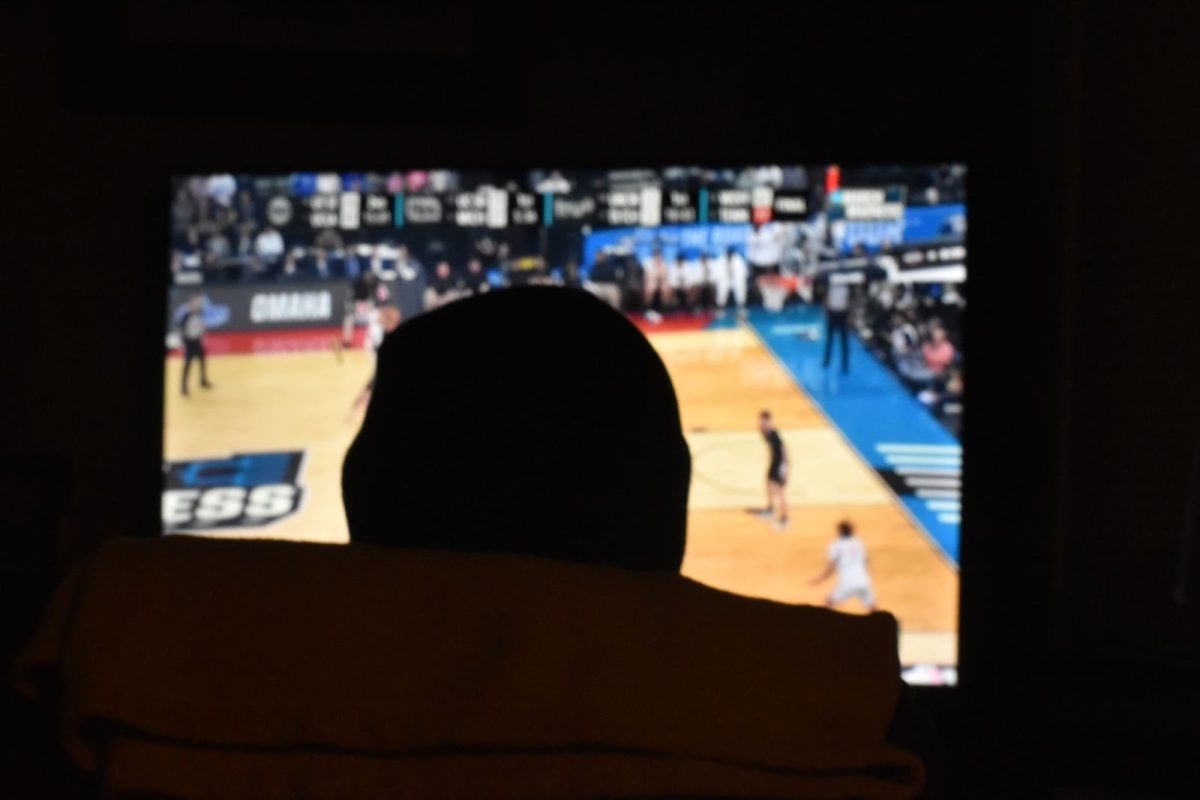Basketball shoes are a staple in American culture both on and off the court. As time has gone on, we’ve seen shoes originally made for basketball turn into fashion pieces or just everyday wear shoes. New shoes have been introduced and existing ones have become more technologically advanced as more brands and players create their own shoes. However, before basketball shoes became a multibillion dollar industry, it all started with the first basketball shoe.
In 1917, Converse came out with the Converse All Star basketball shoe. At the time of their release they were the first high top sneakers made for better ankle support. Originally nicknamed the “non-skids,” they got their new name and the one you may recognize them by today: the “Chuck Taylors.” The name Chucks came when Converse recruited the help of 1920s basketball player, Chuck Taylor. These shoes dominated the market for the next half century as the go-to basketball shoe. However, since the development of newer shoes, they are rarely used for basketball. They are now used as shoes for everyday wear and their popularity has held up to this day even with their new purpose.
The 70s was a revolutionary time for basketball shoes with Converse releasing a new shoe, the Converse Pro Leather, which as stated in the name, replaced the canvas in the All Stars with leather, most notably worn by the two best players of the decade: Larry Bird and Julius Erving. This decade also saw shoe industry powerhouses putting out their first basketball shoes, with Adidas putting out the first low top shoes, the Superstars, and Nike releasing the low top Nike Bruins as well as the high top Nike Blazers. This decade also saw the first signature shoe, with Puma putting out the Puma Clyde designed by Knicks point guard Clyde Frasier. Ultimately, this was the first real competition for Converse in the industry. Just like the All Stars, you still see many people wearing Blazers and Superstars today, although they’ve moved forward from their original use as a basketball shoe.
The first few years of the 80s looked to be more of the same with most players using the Pro Leathers, Superstars, and Blazers. However, in 1984, Adidas released the Forum, a shoe that looks much closer to the modern basketball shoe than anything before. This shoe made Adidas the new kings of the court, but this didn’t last very long.
In 1985, the most important basketball shoe of all time — the Nike Air Jordan 1, Michael Jordan’s version of the Nike Air Force 1 — was released. This shoe was groundbreaking and unique for many reasons. The first of which being the deal Jordan had with Nike; Jordan was the first NBA player to receive a portion of sales from his shoe which was seen as an insane thing to give any player, let alone a rookie yet to play his first game. Another reason they were so unique was the design of the shoe itself. Every shoe worn in NBA games at the time had to be at least 50% white, contributing to the fact that almost every shoe at the time was white with a colorful logo or something small. These shoes shattered that rule and as a result Jordan would be fined $5,000 every game he wore the shoes, which Nike agreed to pay for. Lastly, a design choice that made these stand out was that Jordan’s name and logo was on the shoe, unlike previous signature shoes which were just the brand’s shoes with the athlete’s name on the advertising. The logo on the shoe made them so they weren’t just a pair of Nikes, but were clearly Jordans.
The last half of the 80s saw three more Air Jordan models come out, with the Jordan 3 being the first time we saw the iconic Jumpman logo. However, despite Jordan’s popularity with basketball fans, pretty much every star NBA player like Magic Johnson, Larry Bird, Isaiah Thomas, and many others wore the Converse Weapon released in 1986. Nevertheless, as the 80s came to a close and the 90s started up, Converse would be dethroned by Nike as the basketball shoe king.
The 90s was a sort of arms race between shoe manufacturers to see who could get the best players to sign to them and give them a signature shoe. Nike got off to a great head start, having already signed arguably the greatest basketball player in the world at the time, Michael Jordan. This was alongside the 11 newly released Jordan models, with iconic shoes such as the Jordan 5 and 11 coming out. They also had Micheal Jordan’s sidekick Scottie Pippen, Gary Payton, Charles Barkley, Penny Hardaway, and Kevin Garnett. However, they had some competition with Reebok, who made their first basketball shoe in 1989, but signed stars like Shaq, Allen Iverson, and Shawn Kemp. This decade saw the release of many iconic shoes you can find in sneaker stores for high prices like the Jordan 5, Jordan 11, Nike Foamposite, and Nike Air More Uptempos. The later years of this era saw Adidas sign Lakers youngster Kobe Bryant and Dikembe Mutombo.
The 2000s saw Michael Jordan play his final NBA game and LeBron James play his first. Nike would be the ones to sign “The Chosen One” and release James’ first signature shoe, the LeBron Zoom 1s, which he used in his rookie season. Nike and LeBron would come out with six more shoes throughout the decade. This era also saw the emergence of Kobe Bryant as a real superstar. Kobe was signed with Adidas until 2002, releasing five shoes together. He would eventually sign with Nike in 2003 after they couldn’t come to an agreement on a new contract. Kobe and Nike would release five shoes in this decade, and in 2008, the Kobe Zoom 4s would start a new trend for his shoes. Kobe Zoom 4s were low tops inspired by soccer cleats, unlike almost all other shoes at the time, which were typically high tops. In other, non-Nike news, T-Mac signed with Adidas and released the iconic T-Mac 2s and Allen Iverson came out with the Reebok Answer 3 and 4s.
The 2010s saw many new faces in the NBA and new shoes to go along with them. Kevin Durant found stardom and signed with Nike, going on to release some of the most beloved basketball shoes of all time, like the KD 4s. I spoke to Donnell Hendrix, a Franklin High School student and basketball player, who told me that in his opinion the most iconic shoes were a product of this era. “I mean you could say that any pair of Kyries or Kobes are up there … But just in my opinion, the Grinch Kobes are the most iconic.” The Nike Kobe 6 Grinch was released in 2010. They are one of the most admired and sought after basketball shoes in recent history, as an original 2010 pair goes for $1,400 on Stock X, an online marketplace. Also in this era were the aforementioned Kyries. Kyrie Irving signed with Nike in 2011, and the flashy point guard released his first signature shoe in 2014. Kyries have been deemed as some of the most comfortable basketball shoes on the market and are well loved by basketball players and fans. This decade also saw one of the biggest surprise signings of all time when Under Armour managed to snatch up young shooter Steph Curry, making him the face of the brand. The second half of this era would see even more stars and shoe deals, with Nike signing Paul George, Giannis Antetakumpo, and Ja Morant and the now separated Jordan brand getting Zion Williamson, Jason Tatum, and Luka Doncic. Adidas snatched up Damian Lillard, James Harden, Donovan Mitchell, Trae Young, and Derrick Rose.
Now in the current day, more and more players are getting shoe deals, with 28 players having a signature shoe deal in 2022. Whether or not people know it, a good portion of the shoes people wear every day without touching a court were once upon a time the top-of-the-line basketball shoes. This could be a pair of Jordan 1s or some simple Converse.



